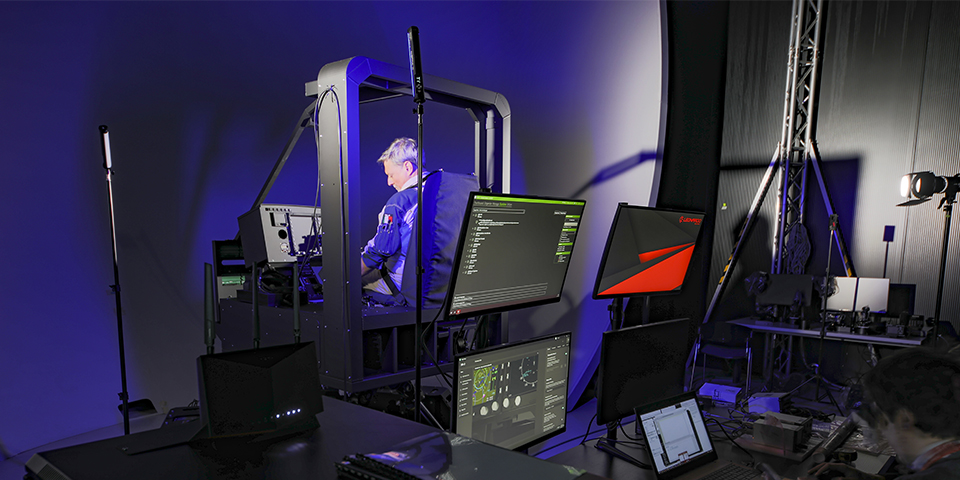During Heli-Expo we introduced the latest addition to our portfolio of synthetic training devices. The Virtual and Extended Reality (VxR) Simulator is the first of its kind to be designed and built with native helicopter OEM characteristics. It brings together a state-of-the-art virtual reality environment and harnesses genuine flight test data to open up a new dimension in training capabilities.
VxR uses previously qualified Level D Full Flight Simulator data and features real flight dynamics, performance and cockpit components enabling users to interact with the physical cabin and panels. It also provides tactile feedback when using the controls for a higher simulation fidelity.
The device offers a superior ‘out of window’ visual system that benefits from stereoscopic vision for exceptional depth perception. The VxR features super short-throw motion without a visual dome which also means that it is compact enough to be installed within a confined space and can be easily transported and configured to represent different helicopter types.
The device benefits from Leonardo Helicopters’ OEM status by employing a complete set of high quality data to enhance the simulation, as well as correlating these data with a range of critical and optimal flight conditions.

We’re also using our VxR experience to strengthen the development of a ‘family concept’ of multi-platform simulators that will span the AW119 (already available), the AW109 products and the AW09. With a reduced footprint and smaller infrastructure requirement, these devices will open up access to simulation in areas of the market where there is strong demand, while helping to reduce training costs and enhancing operational safety.
Our initial focus is on the single/light twin market with the development of a single-seat simulator cockpit for light helicopter simulation. It is platform-specific in terms of cockpit, flight dynamics and performance. The device can also support multiple platforms with the integration of additional cockpits.
The device is easy to install and compact, meaning it can be installed on a smaller footprint than full flight simulators with comparable visual systems. It is also fully integrated with a VR headset and uses a powerful visual database to provide a 360o immersive view for pilots.


